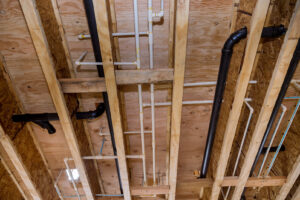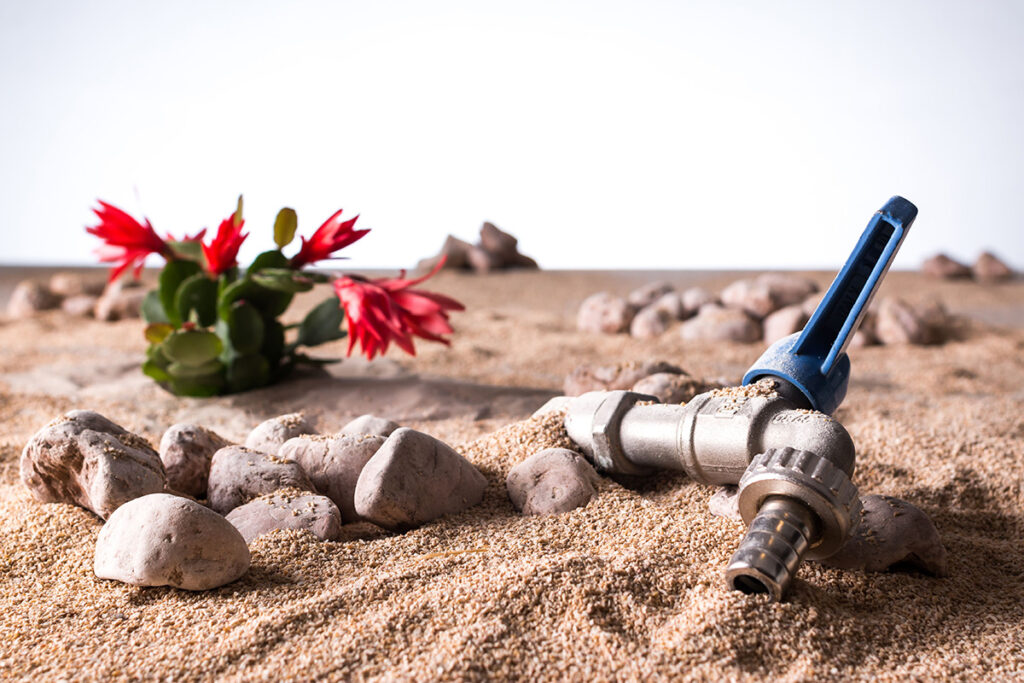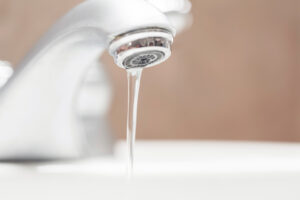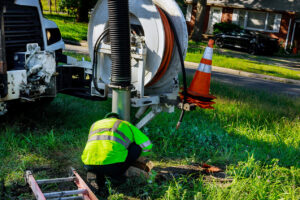In Texas, extended summer droughts combined with rapid urban growth and increasing water demand create critical challenges. Conserving water is not only essential for the environment but also helps reduce utility bills and maintain reliable water supplies. This article outlines proven plumbing upgrades, irrigation optimizations, and practical conservation tips tailored for Texas homes. By exploring low-flow appliances, smart leak detection systems, advanced irrigation controllers, and available rebates, Texans can both save water and promote sustainable living practices.
What Are the Most Effective Water Conservation Plumbing Upgrades for Texas Homes?
Home plumbing upgrades play a key role in water conservation. Installing low-flow fixtures helps reduce consumption without sacrificing performance. Upgrading older toilets with ENERGY STAR rated dual flush or low-flow models can save up to 20 gallons per flush. In addition, low-flow showerheads and faucet aerators ensure that every drop is used wisely during a drought.
Integrating smart water metering systems enables homeowners to monitor usage in real time and quickly detect leaks. These meters, combined with pressure regulators, help maintain optimal water pressure while reducing excessive water flow. Modern plumbing solutions also include trenchless technology for minimally invasive leak repairs. Many of these upgrades qualify for local rebates and incentives, making them an economically sound choice for conserving water during prolonged droughts.
How Do Low-Flow Toilets Help Save Water During a Drought?
Low-flow toilets are engineered to use far less water per flush than older models. Typically, they use about 1.28 to 1.6 gallons per flush instead of 3.5 to 7 gallons. This measured delivery of water not only decreases overall consumption but also reduces the strain on local water supplies. The design improvements, including efficient bowl shapes and dual flush mechanisms, further enhance water savings. As a result, these toilets contribute to lower water bills and help meet community-wide conservation goals.
What Are the Benefits of Installing Low-Flow Showerheads and Faucet Aerators?
Low-flow showerheads and faucet aerators mix air with water, lowering flow rates without reducing water pressure or performance. Studies indicate that low-flow showerheads may cut water use by about 30%, using roughly 2 gallons per minute instead of 5. Faucet aerators can reduce tap water flow by 25–50%. These devices not only save water but also lower energy consumption needed to heat water. Together, they provide measurable savings on utility bills while ensuring comfort throughout the home.
How Can Professional Leak Detection and Repair Reduce Water Waste?
Even small leaks can waste hundreds of gallons of water annually. Professional leak detection services use acoustic sensors, thermal imaging, and flow meters to accurately locate leaks hidden in walls, under floors, or within irrigation systems. Timely repairs prevent further damage and reduce costly repairs, with estimates suggesting that a single leak may waste up to 3,000 gallons of water per year. Regular professional inspections foster proactive maintenance that safeguards both water resources and plumbing infrastructure.
Why Choose Pither Plumbing for Water-Efficient Plumbing Upgrades?
Pither Plumbing offers a comprehensive approach to water-efficient plumbing. Their state-of-the-art products, such as low-flow toilets and smart leak detection devices, along with expert installation and maintenance, ensure that upgrades work seamlessly with existing systems. Data-driven assessments by certified technicians help quantify water waste and implement measurable improvements. With transparent customer service and the possibility of obtaining rebates, Pither Plumbing provides a trusted option for enhancing both water conservation and overall plumbing efficiency in Texas homes.
How Can Irrigation System Optimization Save Water in Texas Summers?
Texas summers demand efficient landscape irrigation. Optimizing irrigation systems means integrating smart controllers, rain sensors, and modern scheduling techniques to match water delivery with actual plant needs and local weather conditions. Such systems can reduce water waste by up to 30% by delivering water only when necessary. Smart controllers automatically adjust schedules based on real-time weather data, preventing irrigation during or immediately after rainfall.
Regular maintenance of sprinkler systems, including inspection for clogs or misaligned heads, ensures even water distribution. By combining technology-driven adjustments with efficient landscaping practices, homeowners can protect precious water resources and maintain healthy landscapes during extended droughts.
What Are Smart Irrigation Controllers and How Do They Work?
Smart irrigation controllers monitor weather, soil moisture, and evapotranspiration rates to determine exact watering needs. They use sensors and algorithms to delay or reduce watering if rain is detected or if soil moisture is adequate. Many of these devices connect to mobile apps, allowing homeowners to track water usage and adjust settings remotely. By eliminating unnecessary watering events and precisely targeting water application, smart controllers save 20–30% of water compared to conventional systems.
How Do Rain Sensors Improve Sprinkler Efficiency?
Rain sensors detect moisture in the air to prevent irrigation during rain or immediately afterward. Using capacitive or resistive measurement technology, these devices signal the controller to cancel or delay watering cycles. This automation not only prevents overwatering but also minimizes runoff and soil erosion. Rain sensors are especially effective when paired with smart controllers, potentially reducing water use by 10–15% during rainy periods while promoting healthier lawn and garden conditions.
What Are Best Practices for Sprinkler System Repair and Maintenance?
Maintaining an efficient sprinkler system starts with regular inspections to identify clogged nozzles, broken heads, or misalignments. Seasonal check-ups and professional tune-ups ensure consistent water pressure and even distribution. In addition, digital monitoring systems can provide early detection of inefficiencies or malfunctions. Routine maintenance extends the system’s lifespan, maximizes water savings, and maintains a vibrant landscape even during drought conditions.
How Does Water-Efficient Landscaping Contribute to Drought Conservation?
Water-efficient landscaping, or xeriscaping, minimizes water requirements by using drought-resistant plants, reducing turf areas, and applying mulching techniques. Native plants adapted to Texas climates require less supplemental watering, thereby reducing irrigation needs. In addition, permeable paving and soil conditioners improve water absorption and reduce runoff. This integrated approach to landscaping not only lowers water bills but also enhances the property’s aesthetics and overall sustainability, making homes more resilient during extended droughts.
What Practical Water Conservation Tips Can Texans Use During a Summer Drought?
Simple changes in daily routines can lead to significant water savings. Homeowners should conduct comprehensive leak inspections in faucets, pipes, and irrigation lines. Incorporating small habits—such as turning off the faucet while brushing teeth, reducing shower times, and running appliances only on full loads—can collectively conserve large amounts of water.
Understanding your water bill is also key. Detailed analysis of water usage patterns can help detect abnormalities such as leaks or inefficient fixtures. Regular review of billing history, combined with adjustments to watering schedules (e.g., watering lawns early in the morning or late in the evening to minimize evaporation), supports sustained conservation efforts.
How Can You Check for Leaks at Home Effectively?
A simple method to check for leaks is to record your water meter reading while no water is in use. After a few hours, recheck the meter; any unexpected increase signals a leak. Homeowners can also use smart leak detection devices, which monitor water usage continuously and send alerts when spikes occur. Regular visual and auditory inspections further help identify issues before they become costlier problems.
What Are Simple Daily Habits to Reduce Water Usage?
Developing small daily habits can make a big impact over time. Turn off faucets while brushing or shaving; shorten your shower time; use a broom instead of a hose for cleaning driveways; and wash your car with a bucket rather than an open hose. Additionally, adjusting irrigation schedules to avoid peak evaporation times and using a rain barrel to collect water for gardening are practical steps that cumulatively save water.
How Can Understanding Your Water Bill Help You Save Water?
Your water bill provides insights into consumption patterns, highlighting potential leaks or inefficiencies. By tracking monthly usage and comparing it to household activities, homeowners can identify spikes and take corrective measures—such as repairing leaks or upgrading fixtures—to reduce consumption. Understanding tiered billing structures may also encourage strategic water use to secure lower rates.
What Are Common Water Restrictions in Texas and How Do They Affect Usage?
During droughts, Texas authorities enforce water restrictions such as limiting lawn irrigation days, prohibiting car washing with hoses on public roads, and restricting outdoor water use during peak hours. These regulations necessitate adjustments in irrigation practices and daily routines. Homeowners must adapt by scheduling watering during allowed times and exploring alternative methods, such as drought-tolerant landscaping, to comply with restrictions while conserving water.
How Can Texans Prepare Their Homes for Drought Conditions?
Preparing for drought involves proactive measures to secure and store water, as well as enhance home resilience. Installing rainwater tanks or barrels allows households to capture and store water during infrequent storms for later use. Reliable water storage not only provides an emergency reserve but also eases pressure on municipal supplies.
Drought-tolerant landscaping is another critical preparation step. Choosing native plants and employing xeriscaping techniques can reduce irrigation needs significantly. Upgrading household plumbing with low-flow fixtures and regular maintenance also minimizes water waste and prevents unexpected losses. Together, these measures build a resilient infrastructure that keeps homes efficient and functional during prolonged droughts.
What Are the Best Water Storage Solutions for Emergency Use?
Emergency water storage solutions include rainwater tanks, storage barrels, and large-capacity cisterns. These systems, constructed from durable, UV-resistant materials with secure lids and integrated filtration, collect water during rainfall and store it safely for essential uses—such as drinking, cooking, and sanitation—when municipal supplies are limited. Many utilities offer incentives to help offset the cost of these systems, making them a practical choice for drought preparedness.
How Can Drought-Tolerant Landscaping Reduce Water Needs?
Drought-tolerant landscaping minimizes water usage by using naturally adapted plants and design strategies that require minimal irrigation. Techniques such as xeriscaping, using native ground covers and succulents, and applying mulch to reduce evaporation, all contribute to lowered water demands. This sustainable approach not only conserves water but also lessens maintenance costs and improves property aesthetics, helping homes remain functional and eco-friendly during droughts.
What Emergency Water Conservation Tips Should You Follow?
In severe drought conditions, extra measures become critical. Restrict non-essential water activities like car washing or frequent lawn watering. Reuse greywater from showers or dishwashing for garden irrigation and monitor for leaks continuously. Temporarily adopting practices such as using disposable dishware or reducing laundry frequency can further limit water use. Keeping emergency storage systems full ensures there is always a backup water source during peak drought periods.
What Water Conservation Rebates and Incentives Are Available in Texas?
Texas utilities and local governments offer various rebates and incentives to encourage water conservation. These programs reward homeowners for upgrading to water-efficient plumbing, installing smart irrigation systems, and implementing drought-friendly landscaping. By offsetting initial upgrade costs, these incentives help accelerate savings on water bills while promoting long-term sustainability.
How Do Texas Water Conservation Rebates Work?
Rebates typically involve a simple application process through local utilities or state programs. Homeowners must submit documentation such as estimates, receipts, and proof of installation. Once eligibility is confirmed, rebates are issued as bill credits or checks. This financial incentive makes investing in water-efficient upgrades more affordable and encourages proactive conservation practices.
Which Plumbing Upgrades Qualify for Rebates?
Eligible upgrades often include low-flow toilets, dual flush models, and water-efficient showerheads and faucets, as well as advanced leak detection systems and pressure regulators. Some programs even cover whole-house retrofits that improve water distribution and efficiency. Homeowners should consult with local water utilities for current lists of qualifying products to maximize rebate benefits.
How Can You Apply for Local Water Conservation Incentives?
To apply, review your local water utility’s website or contact customer service to learn about available programs. Assess your water usage needs and choose upgrades that will deliver meaningful water savings. Then, gather necessary documentation and submit your application as instructed. The review process usually takes several weeks, after which approved rebates are applied to your water bill or sent via check.
How Does Leak Detection Impact Water Bills and Conservation Efforts?
Leak detection ensures that no drop of water is wasted, thereby lowering water bills and bolstering conservation efforts. By identifying leaks early—using advanced smart sensors and acoustic monitoring—homeowners can repair issues before they result in enormous water losses. Preventing even a single leaking faucet from wasting up to 3,000 gallons of water per year contributes substantially to both cost savings and environmental sustainability.
How Much Water Can a Leaky Faucet Waste During a Texas Summer?
Even a small drip can add up significantly over time. In Texas summers, one leaky faucet may waste approximately 3,000 gallons per year. When multiple leaks occur, the cumulative loss can severely strain municipal supplies and increase water bills, highlighting the importance of regular inspections and prompt repairs.
What Tools Are Recommended for Detecting Leaks at Home?
Effective leak detection tools include water meters, pressure gauges, and acoustic leak detectors that listen for escaping water. Smart detection systems linked to home automation provide real-time alerts on smartphones, while thermal imaging cameras help locate hidden leaks. Combining these tools with regular visual inspections creates a robust defense against water waste.
When Should You Call a Professional for Leak Repairs?
If your water meter shows unexpected usage or you hear persistent dripping, it is time to call a certified plumber. Professional repair ensures accurate diagnosis and long-term fixes for complex leaks that DIY methods might not address, thereby protecting both water resources and your home’s infrastructure.
How Can Smart Home Technology Enhance Water Conservation During Droughts?
Smart home technology brings automation and precision to water conservation efforts. Devices such as smart irrigation controllers, automated leak detection systems, and connected water meters allow homeowners to monitor and manage water use in real time. These systems adjust settings automatically based on weather changes and usage patterns, reducing waste and lowering utility bills.
What Are the Benefits of Integrating Smart Irrigation Controllers?
Integrating smart irrigation controllers provides precise adjustment of watering schedules. They use real-time weather data, soil moisture measurements, and cloud analytics to optimize irrigation cycles, resulting in savings of up to 30% compared to traditional systems. With user-friendly mobile apps, homeowners can monitor performance and make adjustments remotely, ensuring that every drop is used efficiently.
How Do Automated Leak Detection Systems Work?
Automated systems continuously monitor water flow and pressure, using advanced algorithms to detect abnormalities. When a leak is detected, these systems send instant alerts and may even shut off the water supply automatically to prevent further loss. Their seamless integration within a smart home network enables proactive maintenance and considerably reduces wasted water.
What Are the Latest Trends in Water-Efficient Plumbing Technology?
Recent advancements include AI-driven water management systems, eco-friendly plumbing fixtures, and touchless faucets. These innovations, along with smart water meters, enhance user engagement through mobile apps and cloud-based data analysis. Trenchless repair methods and IoT-enabled sensors further improve efficiency, ensuring that water conservation keeps pace with changing technology and environmental needs.
List and Table of Water Conservation Technologies
Below is a summary table comparing key water conservation technologies, followed by some additional advanced solutions.
Technology | Key Feature | Benefit | Typical Savings Impact |
Low-Flow Toilets | Dual Flush Operation | Reduced water per flush | Up to 50% reduction per flush |
Smart Irrigation Controllers | Real-Time Weather Integration | Optimized watering schedules | 20–30% water savings |
Automated Leak Detection Systems | Continuous Monitoring & Alerts | Early leak detection and repair | Prevents thousands of gallons |
Rain Sensors | Moisture Detection Capability | Stops unnecessary irrigation | 10–15% water savings in irrigation |
Water Storage Solutions | High-Capacity Rainwater Collection | Backup water supply | Ensures water availability |
Additional advanced solutions include enhanced plumbing materials, advanced flow meters, IoT-enabled fixture controllers, green retrofit kits, and cloud-connected monitoring systems. These technologies, when combined, provide a robust framework for water conservation in drought-prone Texas.
How Does Leak Detection Impact Water Bills and Conservation Efforts?
As discussed, effective leak detection minimizes water waste and reduces bills by ensuring that all water is accounted for. By repairing leaks promptly, homeowners not only save money but also maintain the integrity of their plumbing systems during droughts.
How Can Smart Home Technology Enhance Water Conservation During Droughts?
Smart home integration allows for real-time monitoring and regulation of water usage. By connecting irrigation controllers, leak detectors, and water meters to mobile apps, homeowners gain comprehensive control over water distribution, ensuring efficient consumption even during severe drought conditions.







